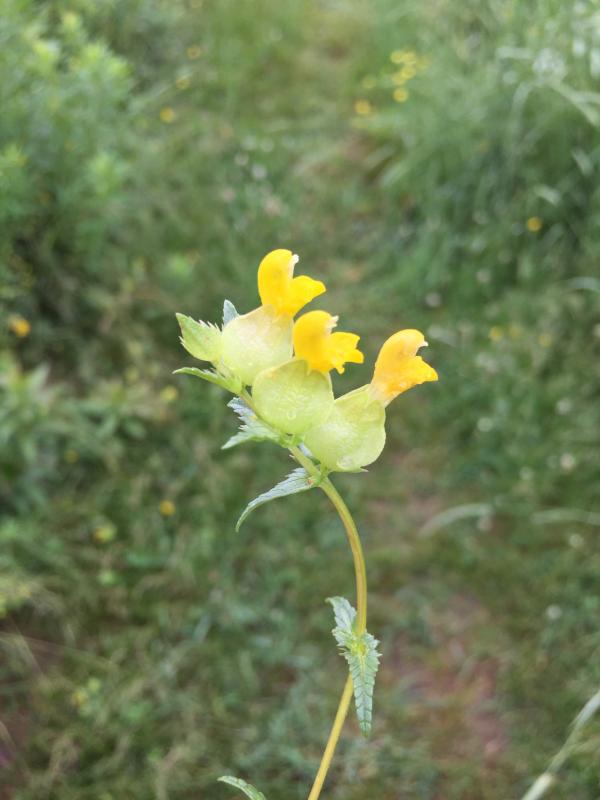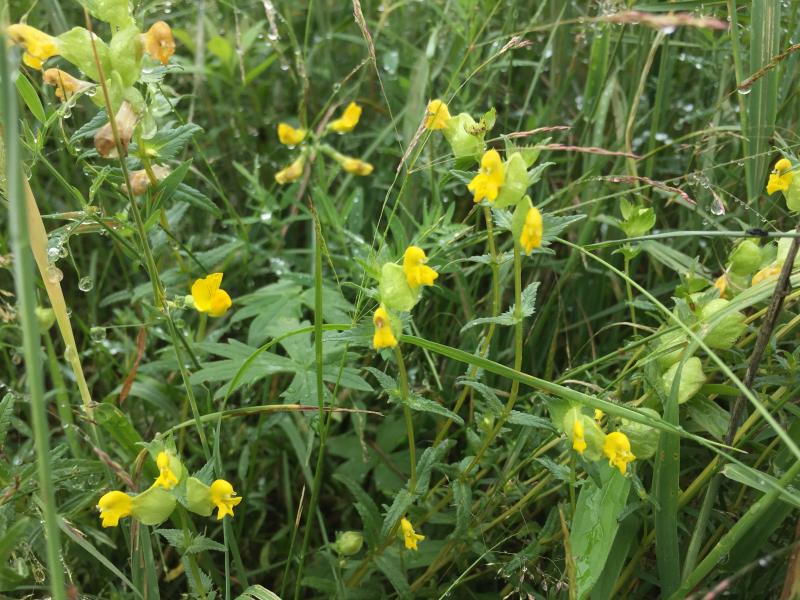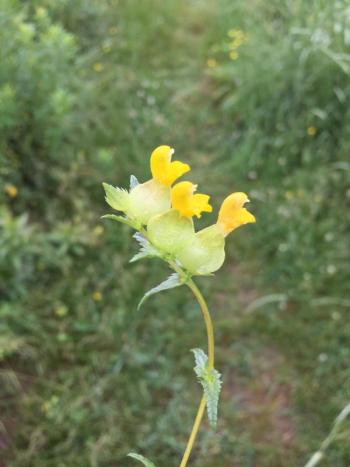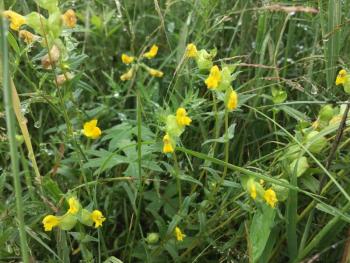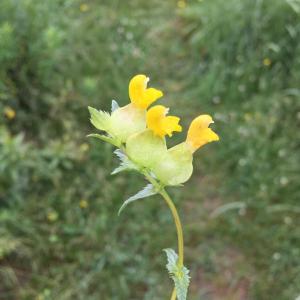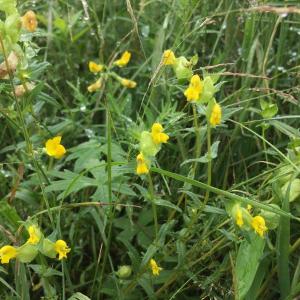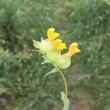Yellow rattle: Distinct little flowers with an amazing adaptation
For those who like to take time to “stop and smell the flowers,” there are plenty of interesting blooms to draw your attention. One that deserves a second glance is the small but striking yellow rattle, a flowering plant distinguished by the odd shape of its blossom--folded yellow petals sticking out of a green clam shell-shaped structure. These flowers are currently in bloom and can be observed in the fields at Oak Point Farm as well as at similar meadows around the region.
The scientific name for yellow rattle is Rhinanthus minor meaning ‘small nose flower’ (referring to the unique shape of the flower). The common name of the plant is inspired by the noise the seeds make when they ‘rattle’ around in air-filled pockets where they are stored before dispersal. The plants will not rattle until later in the year after they finish flowering. This plant is common across New England and thrives in fields, meadows, and areas disturbed by humans. Yellow rattle is native to Europe, but is naturalized in Maine.
Yellow rattle is not only interesting in shape, but it also has a fascinating survival strategy. It is hemiparasitic, which means it gets some of its nutrients by feeding on the sugars of nearby plants. Though the plant has green leaves and produces some of its own sugars through photosynthesis, under the surface the plant also has a specialized root system that attaches to the roots of its neighbors. Yellow rattle’s favorite hosts are grasses, which tend to have large fibrous root systems perfect for the parasitic plant. Initially this parasitism may sound like it would negatively impact an environment, but some studies have found that the plant actually increases biodiversity! By weakening prevalent grasses in a system, yellow rattle allows other plants to grow in fields that would normally be overwhelmed by just a few types of aggressive grasses. So keep your eyes open for this unique bloom the next time you head out for a walk.
Claire Pellegrini is studying Botany at Connecticut College and is Boothbay Region Land Trust’s 2020 Conservation Intern.
Event Date
Address
United States

